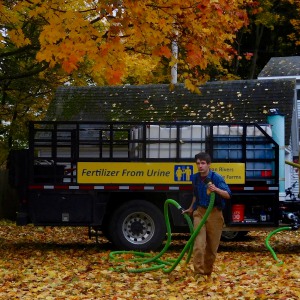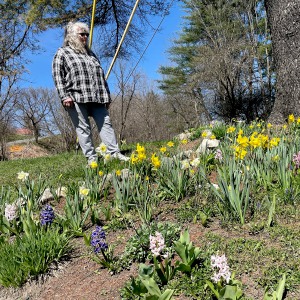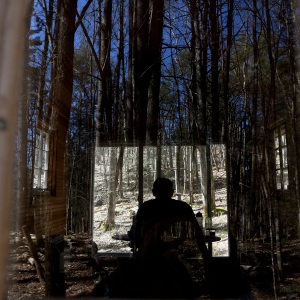Association works to reduce cyanobacteria blooms on Lake Sunapee
| Published: 11-29-2023 4:26 AM |
SUNAPEE — Despite a record number of cyanobacteria blooms across the state this year, Lake Sunapee saw none.
The last bloom in the lake was in 2019, according to Elizabeth Harper, executive director of the Lake Sunapee Protective Association, or LSPA. She chalks up the lake’s resistance to the more severe outbreaks of the bacteria to proactive, rather than reactive, strategizing.
The organization has “been focused on this problem for decades,” Harper said, adding that LSPA, founded in 1898, is the oldest environmental organization in the state. “We’ve had a good understanding that you have to get ahead of the curve, especially with cyanobacteria.”
The bacteria bunches up in thick, blue-green strands in the summer, and some produce toxins that can cause health effects ranging from rashes to liver, respiratory and neurological conditions — even from low-level exposure.
Growth is fueled by warm temperatures and excess nutrients, such as phosphorous from fertilizer or nitrogen from leaky septic systems.
Quick-moving stormwater can rush a host of pollutants into a water body, Harper said.
With an eye on preventing blooms and improving water quality, a pair of new projects are the latest around Sunapee meant to guard against polluted stormwater, which is even carrying “pet waste” into the lake, Harper said.
Phosphorus also naturally occurs in soil, she added, “so when soil erodes, that gets carried off in stormwater, too.”
Article continues after...
Yesterday's Most Read Articles
Projects at the Granliden Community Association beach access road in Sunapee and on Pine Cliff Road in Newbury, N.H., addressed erosion and implemented catchments to slow, filter and/or catch runoff before it reaches the lake.
The mitigation efforts joined several other similar undertakings around the roughly 25-mile circumference of the lake, which touches the towns of Sunapee, New London and Newbury. Of the 40 projects outlined in the watershed management plan, which was published in 2020, LSPA has completed roughly half.
“We’re ahead of schedule,” Harper said. In addition to working with towns — particularly road crews — engaging private landowners has been key to the quick pace, she said.
The organization’s $800,000 operating budget is funded by its 900 members, who either live around the lake or reside elsewhere in the watershed.
The association sends staff out to evaluate individual properties, and suggest tailored ideas for how to keep runoff from leaving driveways and lawns, Harper said.
In Fairlee, the summer of 2022 brought a monstrous cyanobacteria bloom that shuttered public beaches around Lake Morey for weeks at a time.
Swimmers were advised to either sit out the season or, at the least, hose off.
Stormwater measures like those implemented around Lake Sunapee are mapped out in the Lake Fairlee Lake and Watershed Action Plan, published this June with a $30,000 grant from the Vermont Department of Environmental Conservation.
But this past summer wasn’t as bad as the last one, said Fairlee Selectboard Vice Chairman Peter Berger. “Temperatures didn’t reach the sustained levels they did in 2022,” he said.
It was a respite before the lake undergoes an alum treatment to remove excess nutrients, scheduled for May. The project is estimated to cost around $800,000.
As of now, it’s looking like the state will foot the bill, Berger said.
Frances Mize is a Report for America corps member. She can be reached at fmize@vnews.com or 603-727-3242.

 A Look Back: Upper Valley dining scene changes with the times
A Look Back: Upper Valley dining scene changes with the times The future of fertilizer? Pee, says this Brattleboro institute
The future of fertilizer? Pee, says this Brattleboro institute From dirt patch to a gateway garden, a Randolph volunteer cultivates community
From dirt patch to a gateway garden, a Randolph volunteer cultivates community  Norwich author and educator sees schools as a reflection of communities
Norwich author and educator sees schools as a reflection of communities
